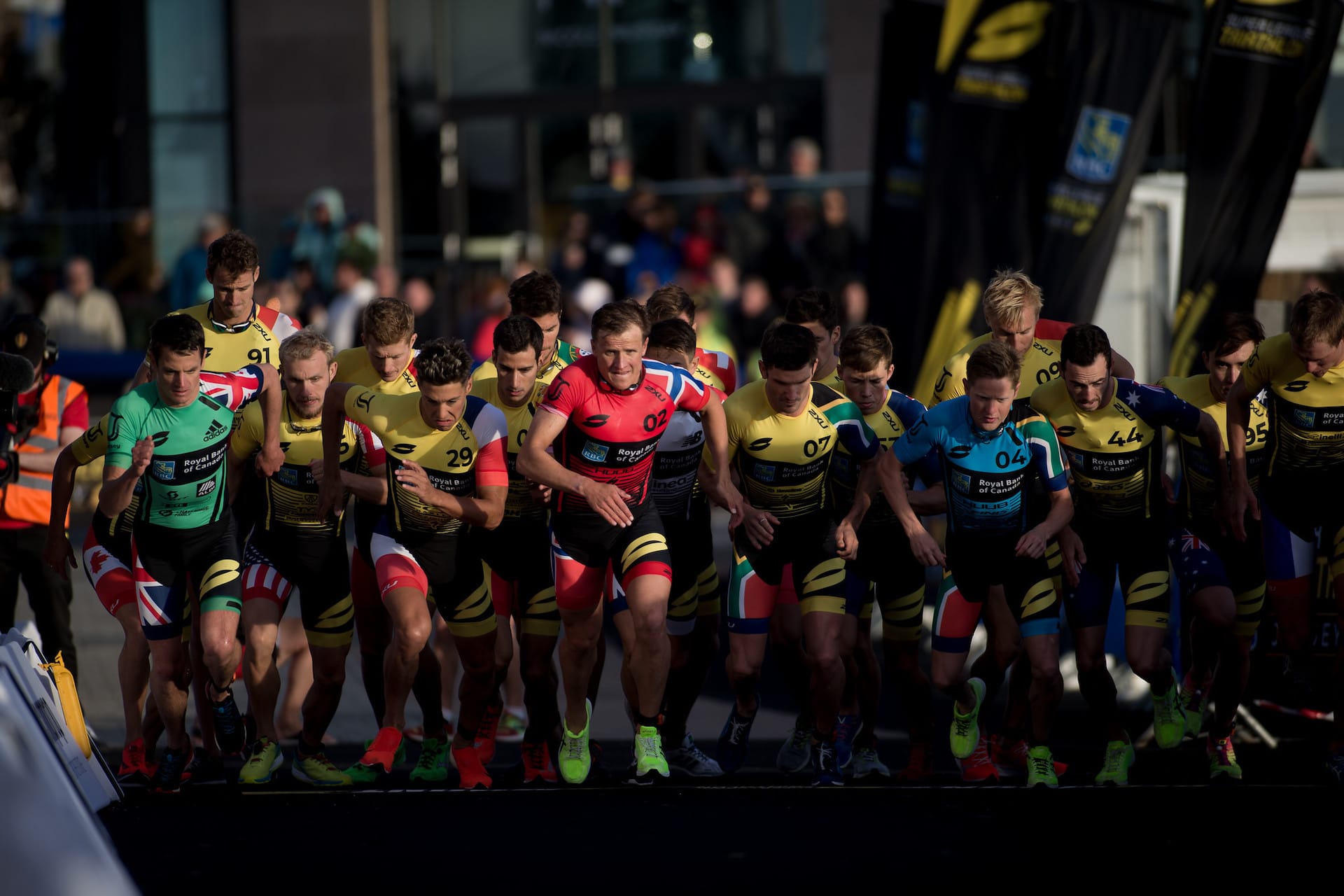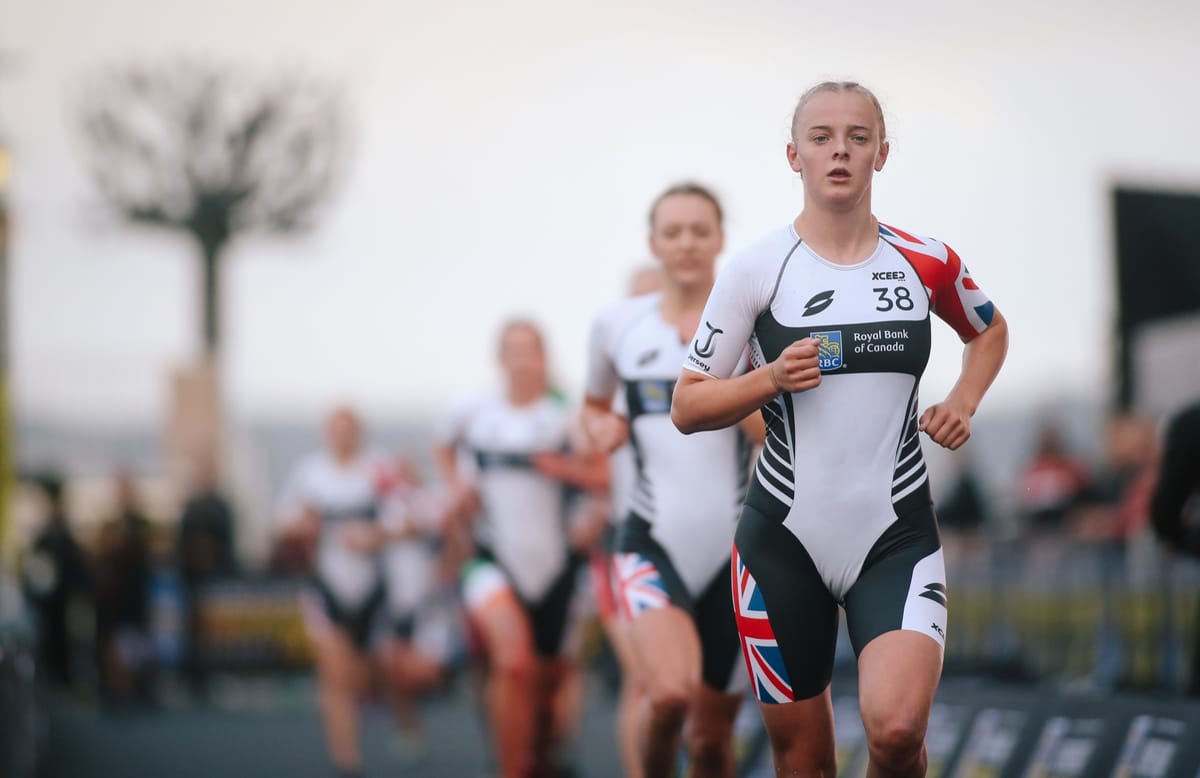What is Super League Triathlon?
Super League Triathlon (SLT) is the Champions League of professional triathlon, pitching the very best swim-bike-run athletes against each other in quick and exciting race formats in fantastic destinations across the globe, all broadcast to a huge worldwide audience via TV, digital and social media channels.
What is the Championship Series?
That is the Series of events in which our athletes earn points towards the overall Leaderboard, which decides at the end of each season who are crowned the male and female Super League Championship Series winners, taking home a coveted Boguslavskiy Trophy. There are a number of rounds in each Series, and a Final to finish things off. It is the only globally broadcast Series that answers the question as to who is the fastest triathlete in the world?
How do you select who competes?
At the end of each Championship Series the top ten ranked athletes are automatically invited back for the next season. The majority of the remainder are made up of Qualifiers, with a series of events taking place around the world to allow any Pro who wants to enter the chance to win a Golden Ticket into the Series.
There are then a small number of Wildcards handed out to ensure the most exciting talent on the planet is on the start line.
So how do the races work?
Each Round is held over two days. On the Saturday, there are two Semi-Finals with the Final on a Sunday.
The line-ups for the two Semi-Finals are decided by a random draw with the athletes seeded into two baskets – one containing the top ten Ranked Athletes from the previous year and the other the Qualifiers and Wildcards. The top five from both Semi-Finals and the five fastest times of athletes who were outside of those positions make the cut to be among the 15 who start the final.
What are the race formats?
This where Super League is truly unique. Super League’s standard distances are 300m swims, 4km bikes and 1.6km runs. Saturday’s Semi-Finals are always a continuous swim-bike-run-swim-bike-run with a mass start. The Finals on a Sunday can have one of four formats depending on the course and what will make for the most exciting racing.
Can you explain the four possible formats for the Finals?
- Enduro: adds on another round of swim-bike-run to the Semi-Final format, so there are nine continuous stages. The easiest way to think about it isswim-bike-run three times in a row. An athlete will be eliminated after every discipline, but more on that later.
- Triple Mix: Athletes have a mass start to begin Stage 1 and race a swim-bike-run. That’s followed by a mass start with arun-bike-swim for Stage 2. Short Chute also comes into play in these stages (more on this later). Then, based on their times over those races, it’s a pursuit style start (see below) for the final bike-swim-run for Stage 3.
- Equalizer: An individual discipline is selected – so either swim, bike or run – and the athletes race that as a standalone event, which iscalled an Individual Time Trial (ITT). The athletes are then set off based on their finish times in the ITT in a pursuit style to tackle a continuous swim-bike-run-swim-bike- run as in the Semi-Finals.
- Eliminator: The first ever format raced in Super League:
- Stage 1: Five Eliminations – one after the bike, two after the first lap of the run plus the slowest two across the line. Short Chute is earned by the first three across the line.
- Stage 2: Four Eliminations – one after the bike, two after first lap of the run and the slowest across the line. Short Chute is earned by the first two across the line.
- Stage 3: Three Eliminations – one after the bike, two after each lap of the run
What is a pursuit style start?
The times of an athlete over a finish line and the differences between them determine at what point they are allowed to begin a race that starts pursuit style.
So, in Triple Mix the total times from Stage 1 and Stage 2 are calculated. The fastest athlete after those first two Stages of racing starts first for the final bike-swim-run. If second place’s cumulative time was five seconds behind, then they start five seconds later. If the last athlete’s times for Stage 1 and Stage 2 were 45 seconds behind, they start 45 seconds after the leader.
The same format is used for the Equalizer, with the starts based on the ITT times.
The times of an athlete over a finish line and the differences between them determine at what point they are allowed to begin a race that starts pursuit style.
So, in Triple Mix the total times from Stage 1 and Stage 2 are calculated. The fastest athlete after those first two Stages of racing starts first for the final bike-swim-run. If second place’s cumulative time was five seconds behind, then they start five seconds later. If the last athlete’s times for Stage 1 and Stage 2 were 45 seconds behind, they start 45 seconds after the leader.The same format is used for the Equalizer, with the starts based on the ITT times.
Do all athletes complete the course?
Probably not! It’s what makes Super League so engrossing.
In all race formats the 90 second rule is in play. So, any athlete that falls 90 seconds or more off the pace of the leader at the end of any individual lap – note that’s a lap rather than an entire discipline – is shown the Yellow Elimination Flag and is out of the race. If no athlete is eliminated by the 90 second rule, then in the Finals utilising Enduro or Equalizer formats we keep the pressure on at the back so the last athlete across the line in every single discipline completed is eliminated. This does not apply in Triple Mix because athletes are racing for their time towards the pursuit start in Stage 3.
The only other time this does not apply is when the Super 6 rule is invoked. This is simply to ensure there are always a minimum of six athletes in a race and, therefore, six finishers – if that happens then the field has been well and truly obliterated!
Anything else to know about the race rules?
Super League has a very special little twist up its sleeve as part of its constant innovation – it’s called the Short Chute…
What is a Short Chute?
That is, quite simply, a shortcut on the course – but not everybody can take it. It has to be earned.
A Short Chute is always awarded to the winners of the two Semi-Finals, no matter what format is used for the Final.
You can also get a Short Chute in Triple Mix, Stage 1 and Stage 2. By winning an allotted discipline you earn the right to take the Short Chute on the next discipline.
How do athletes score points?
Points are primarily accumulated according to the finish position in the Final race of each weekend of the Championship Series.
There are also bonus points to be accrued along the way for the fastest in the swim, bike, run and transition disciplines across the Series, and recurring rounds wins. More detail on that in just a moment.
How many points do you get for a race win?
All 15 athletes who make it through to the Final on a Sunday score points. It is 15 points for the winner down to 1 point for 15th place.
The Championship Series Finale has additional points on the line with 20 for the win, 18 for second, 16 for third, 14 for fourth, 12 for fifth and then running down one point at a time with 2 points for 15th.
And what about these bonus points?
They are largely connected to our coloured Championship Jerseys, which ensure races within a race to keep things highly competitive at every stage.
The Jerseys have their own Leaderboard and points are scored in both Semi-Finals and Finals. They are awarded to the quickest time of the day for the first swim, bike and run disciplines and the total time in the first two transitions. So, if you are fastest in the first swim you score five points for the Championship Swim Jersey Leaderboard. That rolls down to one point for fifth. As Semi-Finals and Finals are both scored there is a maximum of ten points up for grabs at each event.
Top of all the Jersey standings at the end of the Championship Series is awarded one bonus point towards the overall Leaderboard.
There is also a bonus point for any athlete that wins back-to-back rounds in the Series.
Are they literally different Jerseys?
Yes. Topping a Leaderboard carries with it the right to wear a different colour kit to signify you currently lead that division. These Leaderboards are updated after every Final.
The different colours worn by SLT athletes signify:
- Blue – leader of the swim rankings
- Green – leader of the bike rankings
- Red – leader of the run rankings
- Grey – leader of the transition rankings
- Pink – leader of the Championship Series
- White – the youngest athlete in the field
- Yellow – everybody else
What’s the prize money on offer?
Super League carries the richest prize purse in the sport.
First place in each Final wins $10,000. The Championship Series winner takes home an extra $100,000 after the final event of the season.
There are big prize money pay-outs for all 15 athletes who compete in every Final, and significant bonuses for the top ten Ranked Athletes at the end of the Championship Series. There is also $10,000 on the line for the overall winner of each of the different coloured Jerseys at the end of the Series.
On top of all that, each Super League contract comes with a commitment to be treated like a true Professional. That means Super League pay for all flights, accommodation and food and provide massage, bike mechanics, physio, social media support and much more.







